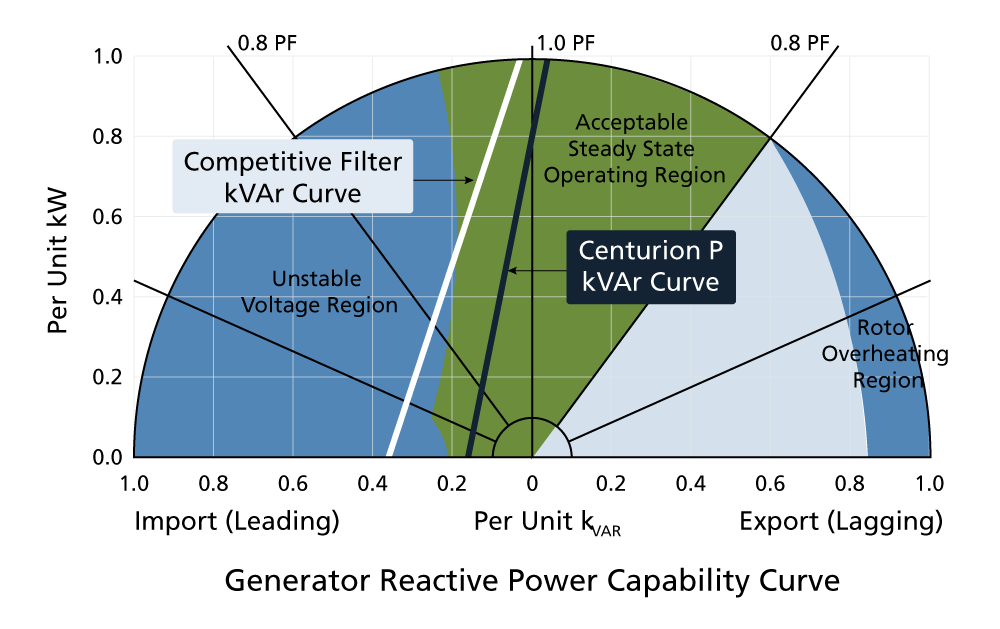Passive Harmonic Filters - Leading Power Factor At Light Load And Application On A Generator
For a utility supplied power system, a leading power factor will result in higher losses and an increase in voltage. Under light load conditions, passive filters can cause a leading or negative power factor since they incorporate capacitance; but this may not be cause for concern. Firstly, if the passive filter is applied to a small non-linear load in relation to the total system load, it will have little impact on the power factor at the utility connection point. Secondly, utilities usually charge customers based on kilowatt-hours used plus a demand charge. The demand charge is based on the peak power (e.g. highest 15-minute kVA in the billing period). If the power factor is low (leading or lagging) when the load is at its peak, this will result in a higher demand charge. If the power factor is low at light loads, this will have no impact on utility billing. Passive filters provide leading kVArs (capacitance) and the power factor is usually close to 1.0 at maximum load. The power factor will generally become leading (negative) at light loads, but this will not result in a penalty from the utility.
For a generator supplied power system, the leading power factor can be an issue especially if the generator is sized very close to the load requirement. Generators can handle a limited amount of leading kVArs before the output becomes unstable and/or the generator is damaged. As a rule of thumb, if the total capacitive kVAr in the passive filter(s) does not exceed 20% of the generator’s kVA rating, the generator can tolerate it. If the capacitive kVAr in the passive filter exceeds 20%, this can cause voltage regulation and excitation control problems with the generator. The capacitive kVAr in the HPS Centurion P passive harmonic filter is always less than 20% of its kVA rating to ensure compatibility with generator fed systems. Some manufacturers offer a contactor to switch out the capacitor portion of the filter at light loads to avoid leading power factor. Switching out the capacitor means that the unit is no longer acting as a harmonic filter. The capacitance is low enough in the HPS Centurion P passive filter that it does not need to be switched out at light loads. The curve below illustrates capacitive kVAr for the HPS Centurion P passive filter compared to a competitive passive filter.

